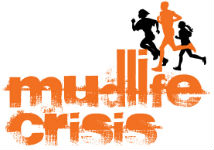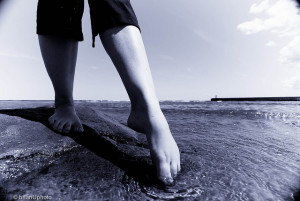Making changes to our lives is never easy. And picking the right way to do it can make all the difference.
When it comes to making big changes in your life, there are two major schools of thought on how to do it: there’s the baby steps method, where you make small, incremental changes over time in an effort to not overwhelm yourself and work slowly toward the success you want; and the “jump right in” method, where you wholeheartedly go for it and make a massive change to how you live your life.
I won’t bore you with definitions of these two methodologies for change, as I think they’re pretty self-explanatory.
(And if you want a great discussion on the creation of positive habits and great ways to accomplish their creation, I’d recommend Darren Hardy’s book The Compound Effect).
The goal, of course, is to figure out a way to adopt the positive changes and make sure they are lasting ones, obviously. And it’s largely a matter of personal preference and understanding about how your mind works. And it also has a lot to do with what changes you’re making.
On most things, I am a “jump right in” person. For example, when I switched my diet to exclude grains, legumes, and as much artificial food as I could, I did it whole hog (no pun intended). I found that feeling that bodily change from a carb-heavy, toxin-laden food source to a cleaner- and more fat-based diet (that is, losing many of my aches and pains, gaining mental clarity, losing a ton of weight, and creating quick feedback in my body to tell whether I was eating something healthy) was best for me. For those sorts of changes, I highly recommend “jumping right in.” I think that if you do something like this too gradually – perhaps weaning off pasta one week, then bread the next, then cookies the next, then excluding soy the next, is almost TOO gradual You’re not going to feel the effects of the change as overwhelmingly as you might if you just drop all that stuff at once.
The folks at Whole 9 agree with me on this one.
But I’m working with some other changes to my life as well. For example, I’m trying to build a mediation practice in my life. And that’s not a habit that comes easily to a person like me. My mind is always going ninety miles-an-hour, and that’s before I have my morning coffee. So for a change like that, building the habit slowly but surely seems to be best. Five minutes a day is where I’m at with that right now. Doing more than that is frustrating and overwhelming for me. I get cranky with myself as my mind wanders off and starts thinking about things instead of remaining clear. Building that meditation skill is going to take me some time. But it’s a worthwhile goal, for sure, and I think a gradual approach will work best here.
(Bonus note: I’m having good success using an iPhone app called Calm and their Seven Days of Calm program. It’s available for Android, too, links are at their website).
So what’s the answer here? It’s not simple, but I think it can be made fun. It all comes down to knowing best how you work.
I’m not going to be so bold as to say that everyone will have success with dietary changes if they jump right in. And I also won’t go out on a limb to recommend that everyone ease their toe into the water with meditation. Some of those things come easier to some of us than others and the methodology we use is key to that.
For example: one of the challenges that many people have with switching to a lower-carb diet like initial forays into ancestral or Paleo diets is what is known as the Carb Flu. That’s when your addiction to high-carb food is so great that you feel sick or have withdrawal-type symptoms as you wean your way off the stuff and begin to work more toward a fat-burning diet. And it does affect a lot of people. I was not one of those people, thank goodness. But if you find that you are one of those people, a 21- or 30-day on-ramp program might not be the most appropriate thing. (Or, it might, and you just need to gut your way through a week of those withdrawals to get what you want).
There’s the rub: how are you to know what methods you should use for various challenges?
My advice is to journal. Record your journeys with big changes like this and the different techniques you use to do them. Write down your feelings – physical, mental, and emotional – as you work your way through the process you’re given. Be as detailed and honest with yourself as you can. And write neutrally. This is not a time to try to be dogmatic or self-deprecating, this is a time to explore how your mind works and what is best for you.







